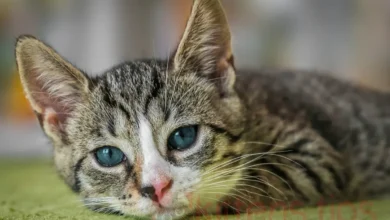
Spaying and Neutering Cats – Risks and Benefits
In this article, we will try to explain in the simplest way possible about spaying and neutering cats. We’ll discuss the risks a cat may face during the sterilization surgery, as well as the numerous benefits, both for the cat (or tomcat) and the owner.
First and foremost, it’s important to understand the difference between spaying and neutering and what each term means.
Table of Contents
What Does “Spaying” and “Neutering” Mean and What’s the Difference?
The terms “spaying” and “neutering” are often used interchangeably when it comes to surgical procedures for cats and dogs, but there is a subtle difference. Neutering refers to the removal of male reproductive organs (testicles) in cats and dogs, while spaying refers to the removal of female reproductive organs (ovaries). In practice, these terms are often used interchangeably, with a slight nuance. The term “spaying” is also commonly used for tomcats, while “neutering” strictly refers to male cats. In conclusion, it’s not wrong to say that you want to “sterilize your tomcat.” After the process of removing the testicles, the tomcat becomes sterile – unable to reproduce. It’s incorrect to say, “spay the female cat.”
“Sterilization of cats” can be used as a general term.
In English, there is a distinction between “neutering” and “spaying” when it comes to surgical procedures for cats and dogs. “Neutering” refers to the removal of male reproductive organs (testicles – neutering tomcats), while “spaying” refers to the removal of female reproductive organs (ovaries – spaying female cats).
Spaying Cats – Risks and Benefits
The arguments for and against spaying cats have been a long-debated topic on pet-related forums. Unfortunately, those who oppose spaying often fail to realize how many cat litters end up abandoned or discarded in bags from the very first moments of life.
Regarding the surgical procedure, it is much simpler for male cats, involving the removal of the testicles without the need for an incision inside the abdomen, as is the case with females. However, modern surgery techniques and the use of new materials have made spaying females relatively safe as well.
Risks of Sterilizing Cats (Females and Males)
Generally, sterilizing cats is a safe procedure with a relatively low risk of complications. However, any surgical procedure carries risks, and there are some associated with sterilization, even though they are rare.
Let’s explore some of the possible risks associated with sterilizing cats.
Anesthetic Complications: Anesthesia can pose risks for cats, especially for older cats or those with pre-existing conditions. The main risk is the cat not waking up from anesthesia. However, modern anesthesia is relatively safe, and complications are rare.
Bleeding: Bleeding is rare but can occur during or after the surgical procedure. It can be treated with additional surgery or by administering blood clotting medications.
Infections: There is a small risk of infection after surgery. The likelihood of this risk can be minimized by following post-operative care instructions and, if necessary, administering antibiotics. The veterinarian will provide necessary recommendations.
Urinary Complications: In cats, there is a small risk of developing urinary issues after sterilization. Urinary tract infections or urethral blockages may occur. These problems can be serious and require immediate medical intervention.
The risks associated with sterilizing cats are relatively low compared to the health and behavioral benefits.
The Benefits of Cat Sterilization
Cat sterilization brings numerous benefits, from increasing the cat’s lifespan to reducing the number of abandoned kittens.
Preventing Unwanted Pregnancies: Spaying and neutering cats prevents unwanted pregnancies in cats and reduces the population of stray cats.
Preventing Diseases: Sterilization reduces the risk of serious conditions such as breast tumors and uterine infections.
Behavioral Improvements: Sterilization reduces aggression, roaming, and fights between cats, as well as territorial marking and undesirable behaviors in general.
Increased Lifespan: Sterilization can prevent certain health problems that can affect the cat’s lifespan.
Sterilization also brings peace to the owners. It is well-known that during a cat’s heat cycle, their behavior can be drastically different from their usual demeanor, often accompanied by specific vocalizations.
We won’t go into great detail about the reproductive cycles of cats in this article, but keep in mind that cats are seasonal polyestrous animals. This means they go into heat during the breeding season, which typically lasts from spring to late autumn. During the breeding season, a healthy cat can go into heat multiple times, with the number of cycles varying between 2 and 7 in a year. Indoor cats exposed to artificial lighting may have reproductive cycles throughout the year.
Contraceptive treatment is not a long-term solution for avoiding sterilization. Some cats may experience side effects from contraceptive use, such as vomiting, diarrhea, weight gain, and mood changes. These side effects can be unpleasant and may require discontinuing contraceptive treatment.
In many cases, the use of contraceptives increases the risk of conditions like breast tumors and uterine issues.
In conclusion, if you want to have a healthy cat for as long as possible, consider spaying and neutering cats, especially if you want to prevent unwanted reproduction when a cat is not intended for breeding.


